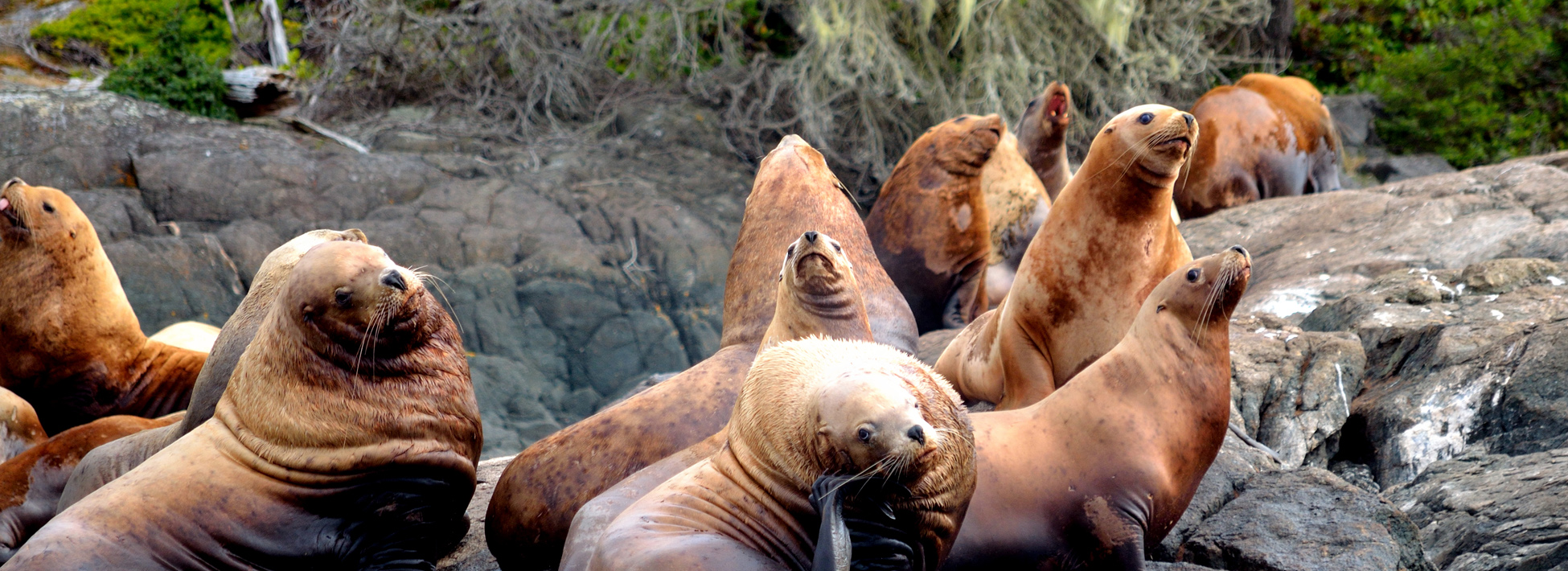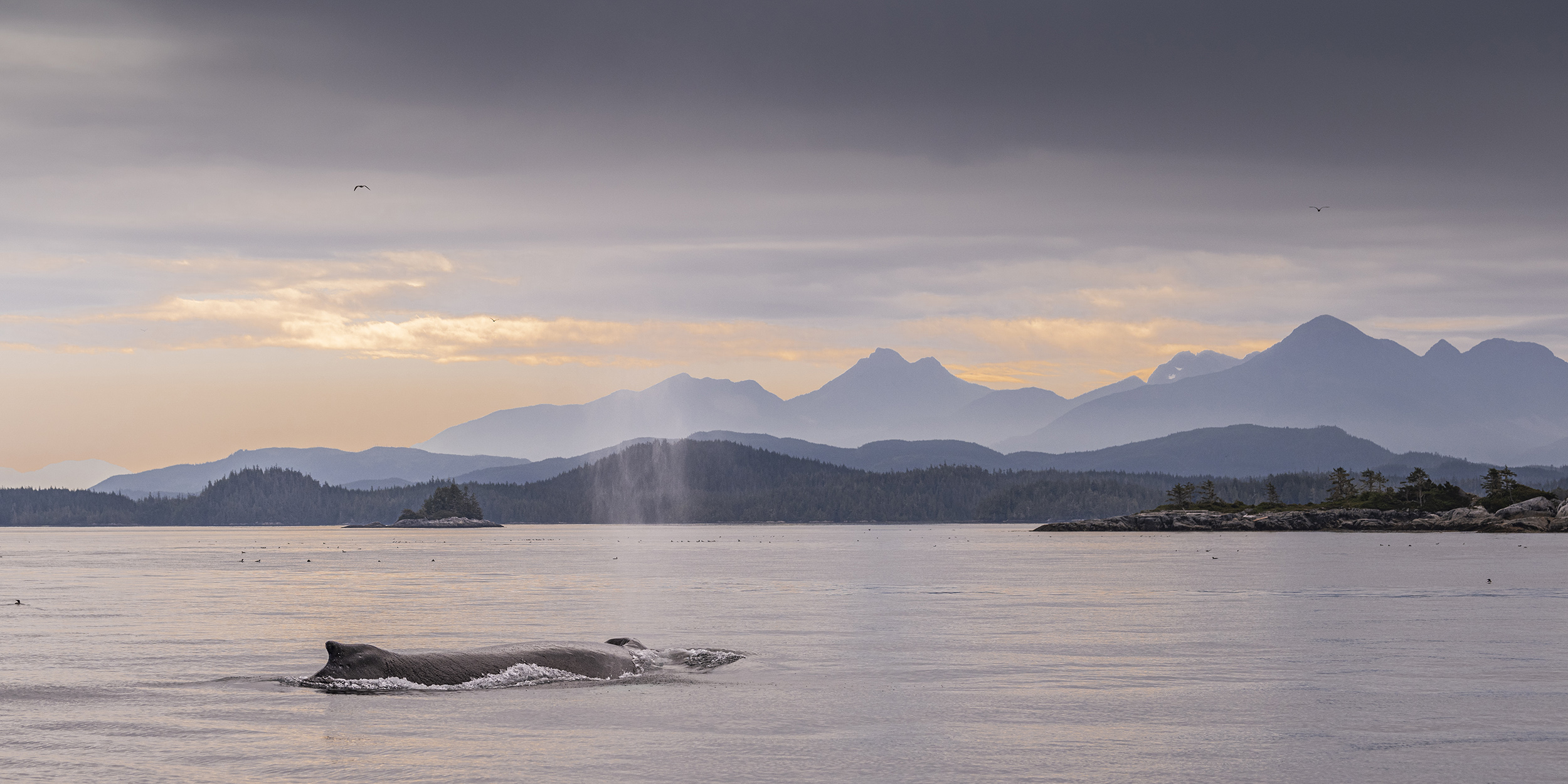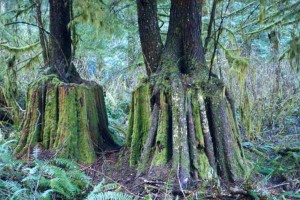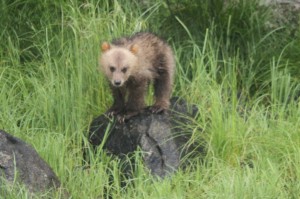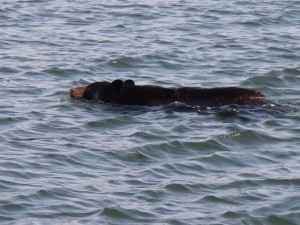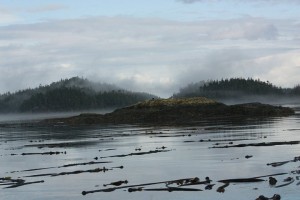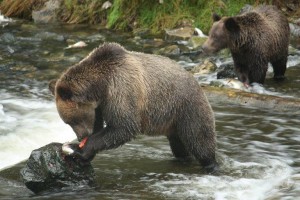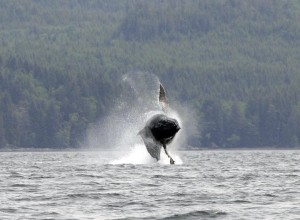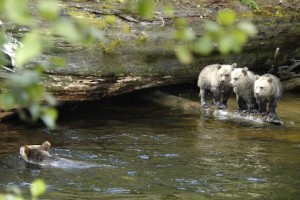
April 8th posting shows a May cub while these three are also first year cubs this photo was taken some time after August 24th when we are permitted to use the viewing stands on the Glendale River’s spawning channel. Three months has passed and even though this mother is feeding triplets they are allot larger than the May cub. A several more months of eating salmon and these three should be ready to den for the winter. The survival rate for cubs in our viewing area in quite good. It is common on the grizzly tours to see mothers with sets of twins and triplets in the spring that we had viewed the previous year.
